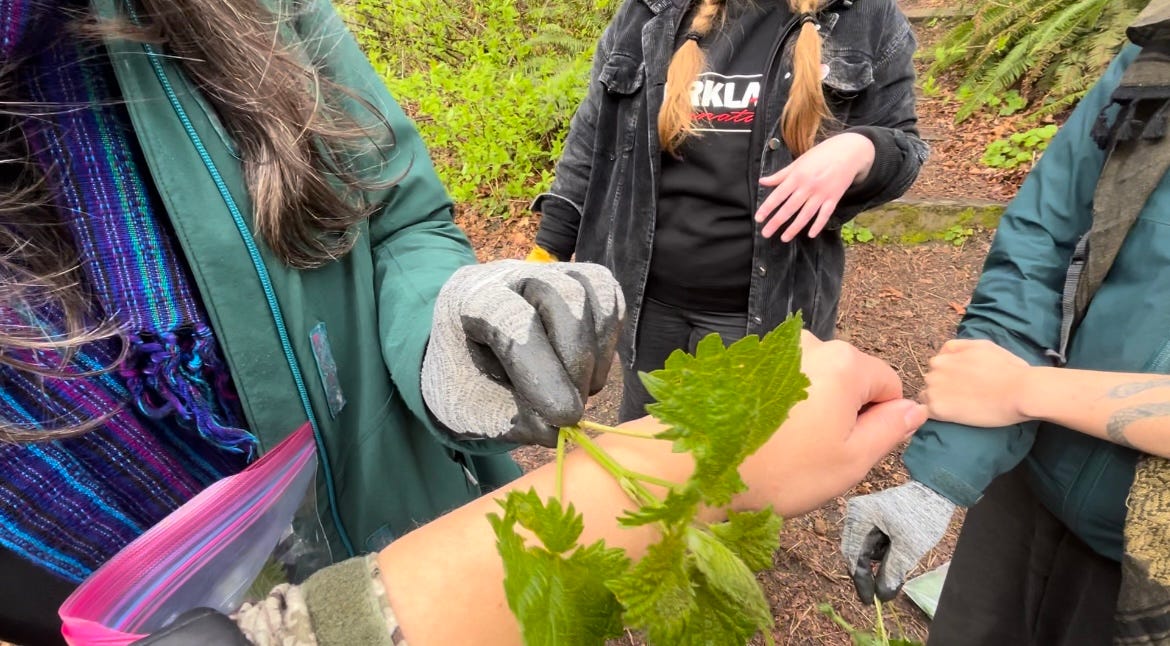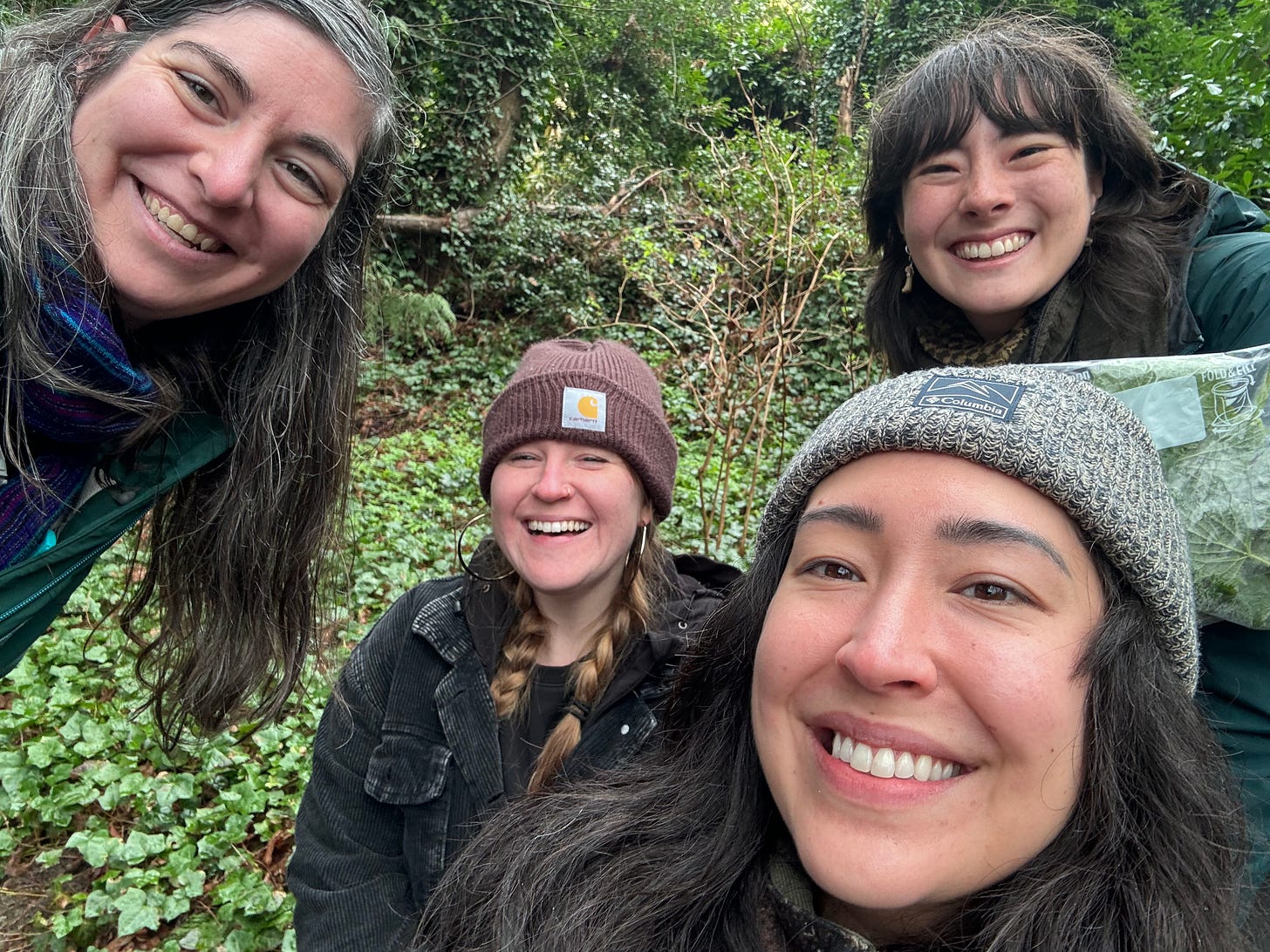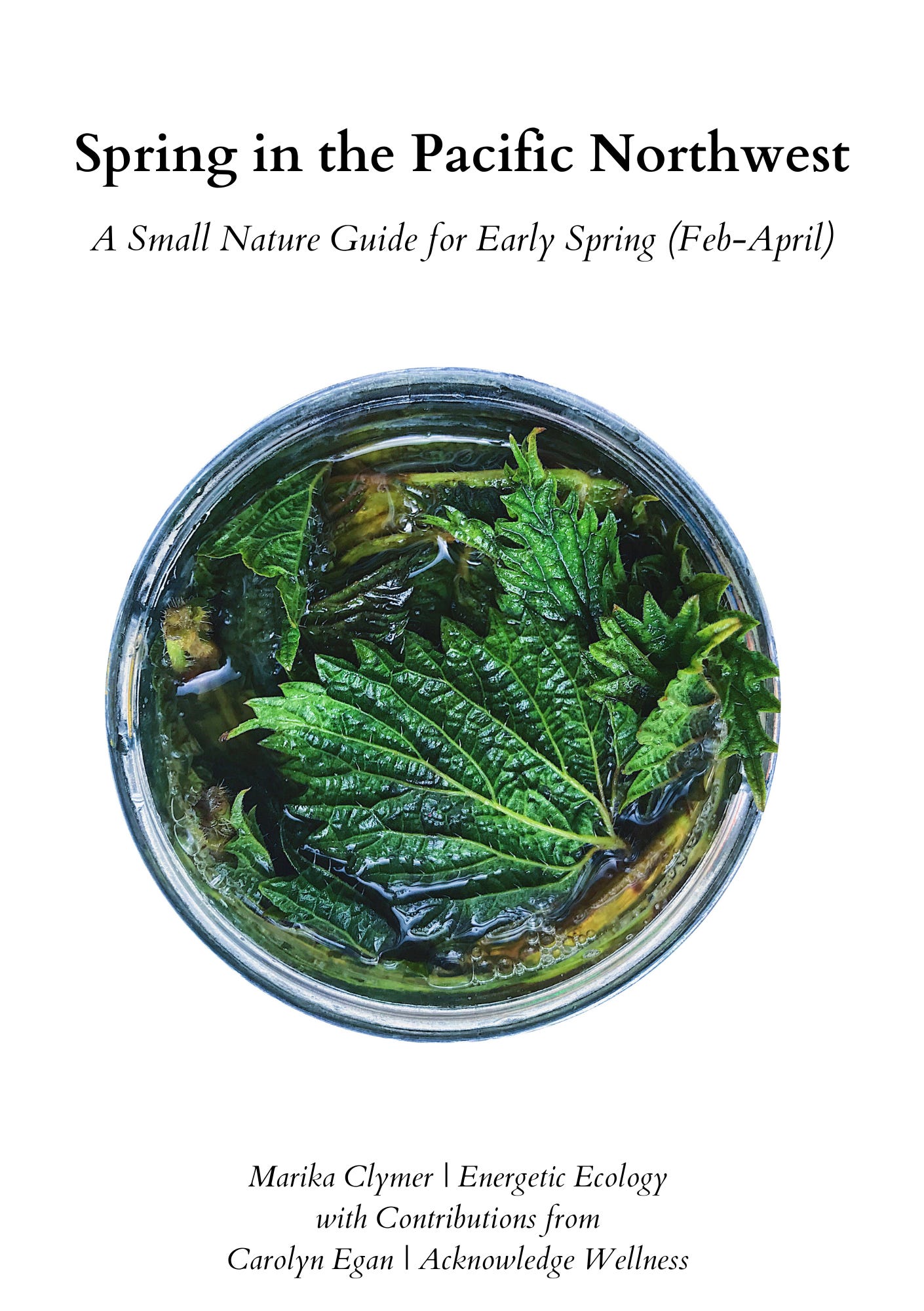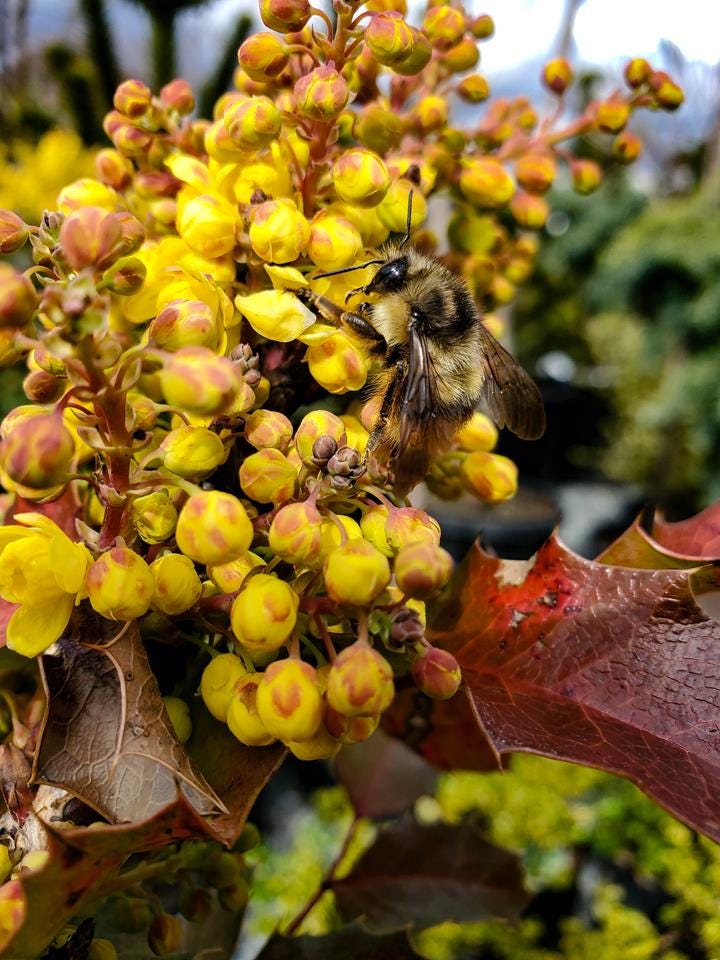A Guide to Early Spring (a Zine Collaboratively Written with Carolyn Egan of Acknowledge Wellness)
Introducing a seasonal zine in collaboration with Carolyn Egan of Acknowledge Wellness. Learn about common plants and their properties, energetic insights based off of regional ecology, and more.
This Newsletter Includes:
Table of Contents for A Guide to Early Spring
How This Zine Was Born
“The Medicine of Slow Emergence” - insights into the guiding energies of Early Spring

What You Will Find in Our Early Spring Zine:
The Medicine of Slow Emergence
Connecting with the Rhythms of Nature & Early Spring with the Chinese Lunar Solar Calendar
Oregon Grape - Berberis aquifolium
Red-Blossoming Currant - Ribes sanguineum
Red-Blossoming Currant Flower & Sumac Infused Vinegar Recipe
Stinging Nettle - Urtica dioica
Fermented Nettles Recipe
Nettle Pesto Recipe
Resources for Additional Inquiry
How this Zine was Born
One of my biggest goals for 2024 was to begin mailing physical copies of newsletters, and upon creating a companion guide for our monthly Communal Nature Walk a few weeks ago, I realized that sharing this guide more widely would be a wonderful way to provide that newsletter for those who wanted to support my work, and a way to get something physical into the hands of people interested in deepening their relationship with the natural world.
As many of you who have been apart of my Substack since its’ inception just a few months ago, I have been playing with different ideas as to how to draw energetic insights from the micro-seasonal ecology around me. While the specific timing is perhaps unique to the Puget Sound (located in the Pacific Northwest), the medicine and guidance can be applied anywhere that Spring, Summer, Fall, and Winter happens, but perhaps allowing folks to be in deep observation of their own region, as well as beginning to integrate the framework of energetic ecology in their own unique way. Many of the plants provided in the zine are ubiquitous across the United States, with the timing of their emergence, blossoming, and fruiting/seeding fluctuating a few weeks.
I am still playing with the micro-seasonal newsletters offered to all Substack subscribers, but the seasonal zine will only be offered digitally to paid subscribers, with physical copies available for purchase on my website.
Our Guide to Early Spring
The Early Spring issue is written in collaboration with Carolyn Egan of Acknowledge Wellness LLC (IG: @acknowledgewellness). I also recommend subscribing to her new Substack, “Fite Fuiate” which in Irish tradition means “firmly interwoven, inextricably mixed up” - where she blends Irish Tradition, Traditional Chinese Medicine, herbal medicine, language, ritual, and wellness.
This guide to early spring was cultivated both before and after our monthly communal nature walk on Saturday, March 9th, hosted at Golden Gardens Park in Seattle, WA. In communing with the plants that are now emerging, we were able to glean insights about the energy of this delicate transition between Winter and Spring.

The Medicine of Slow Emergence (a preview)
For the season of late February through early April, tapping deeply into the heartbeat of the Earth can provide us with deep insight to help guide us into Spring. Sacred Transitions - this time between late February through early April (primarily March), where we stand between the fullness of two energies: a time that is not quite fully Winter, yet not quite fully Spring.
Looking to some of our flora & fauna friends who are the first to emerge from their winter slumbers, we can find deeply needed medicines for this time.
Bumblebees remind us that, in order to have the energy to embody the energies of Spring & Summer, we need to deeply nourish ourselves, replenish our core reserves of energy, and resource ourselves with the sources of food & energy that are readily available in our immediate environment. Here in the Pacific Northwest, the first signs of Spring and vital sources of nourishment for native pollinators are the flowers red-blossoming currant, big leaf maple, and oregon grape. The nectar of these plants allows our native pollinators to replenish any reserves that were depleted from winter’s long hibernation, provide hope for the sweetness of Spring & Summer to come, and provide the necessary energy to begin building their nests - creating brood cells, laying eggs, and more.
Unlike the charismatic and widely known honeybees (Apis mellifera), approximately 90% of the 4,000 species of our native bees across the Americas are solitary bees. While honeybees live socially in colonies of tens of thousands of individuals that carry on generationally from one season to the next, most native bees hibernate in solitude. Honeybee queens typically spend the near entirety of their lives within the most protected layer of the colony, and are not responsible for the construction of the hive structure, while most native bee queens do not rely on a colony of worker bees to carry out these duties, including foraging pollen & nectar.
The non-native honeybee indeed provides valuable insights on the principles of community, amongst many others, but our native bees have a medicine of their own, particularly for this time. The act of emergence is our own - we can give ourselves permission to move at our own pace, emerging when it feels right in our body, and bee responsible for our own nourishment - following what looks delicious, what our individual body craves, and embodying a flow that is meaningful and responsive to our own needs & desires.
The entire zine will be available to paid subscribers below, or is available for purchase of physical copy on my website.




